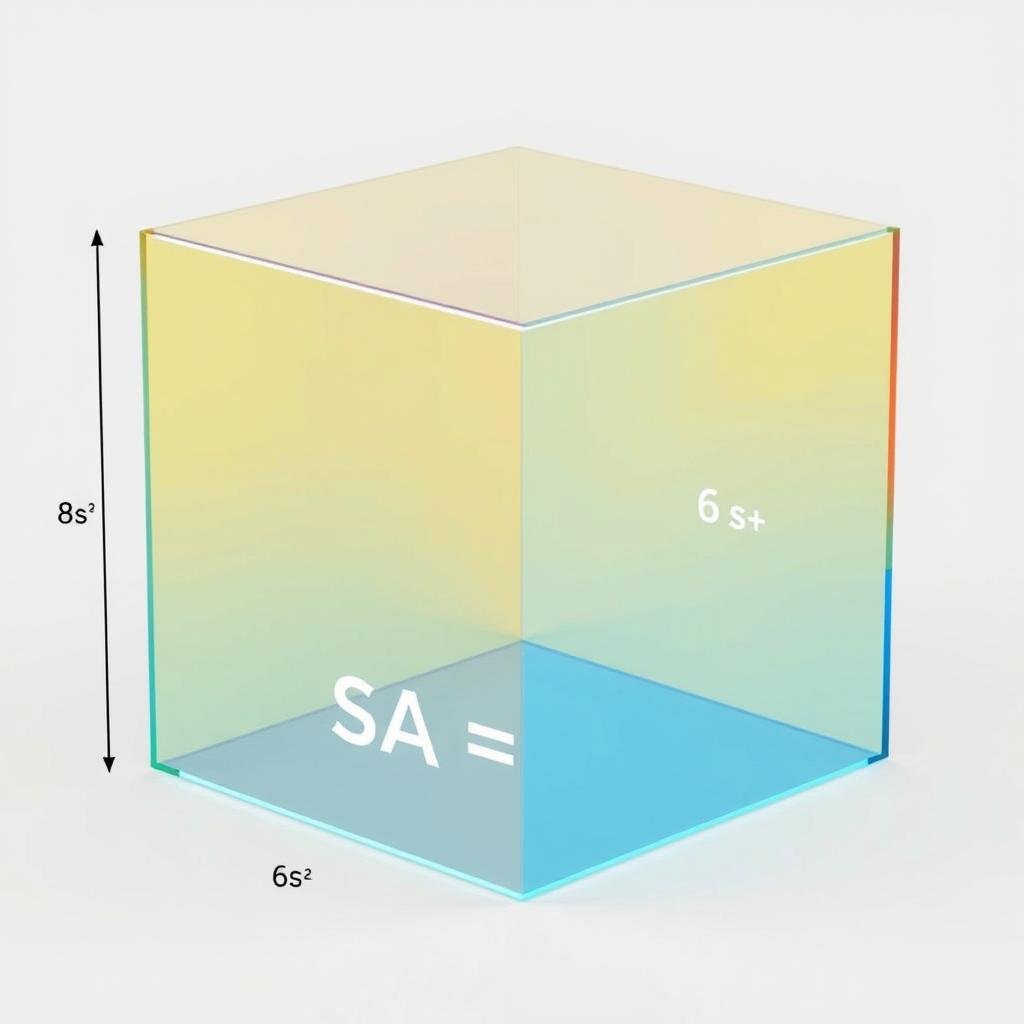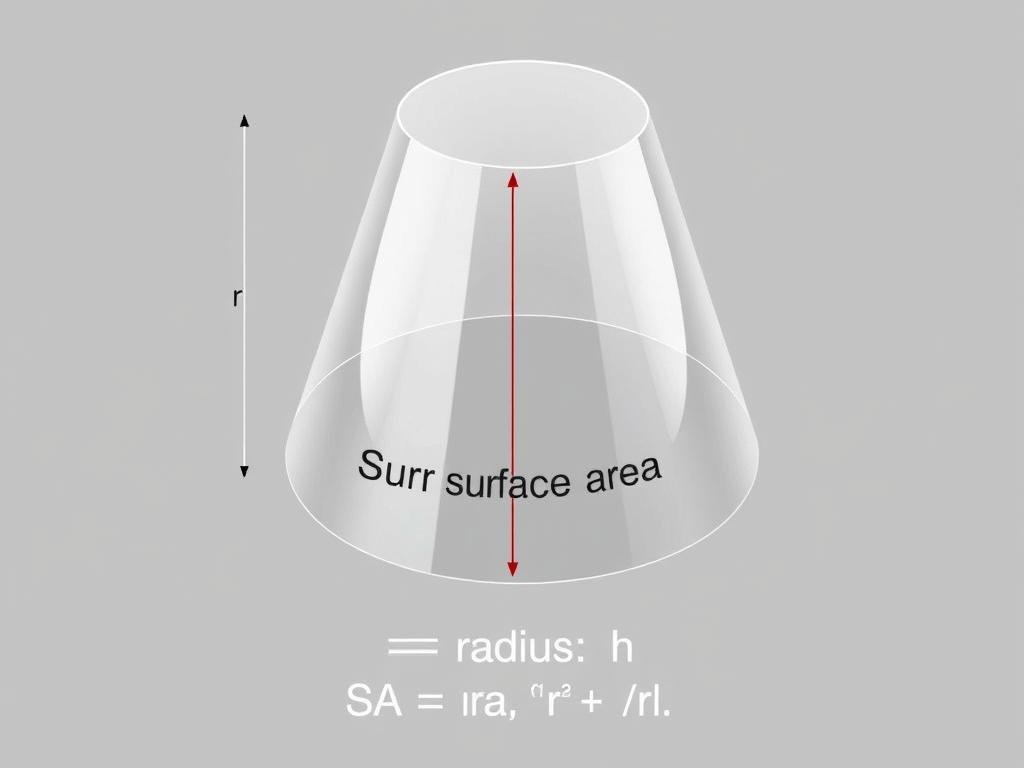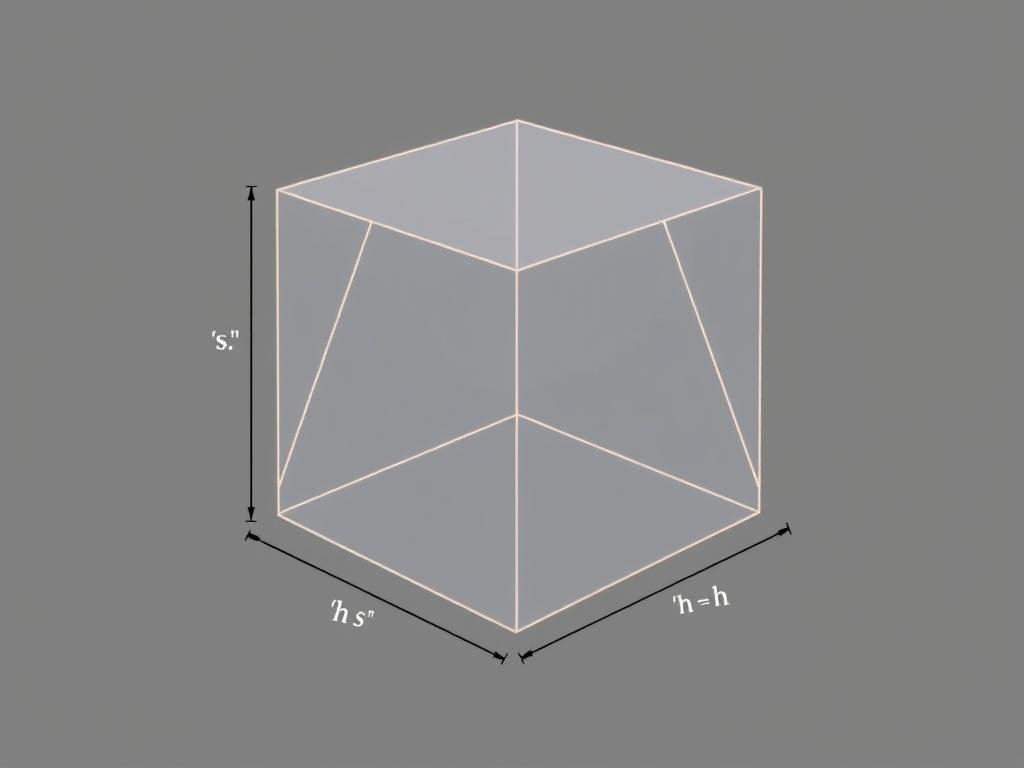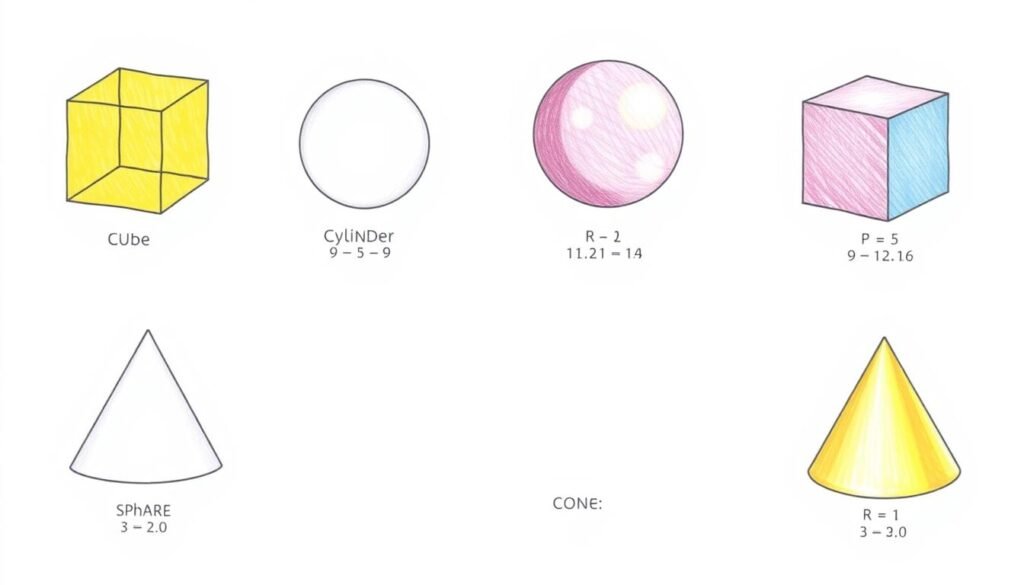Surface Area Calculator helps you quickly find the area of 3D shapes like cubes, spheres, and cylinders. Easy, accurate, and perfect for math and geometry.
Surface Area Calculator
Understanding how to calculate the surface area of 3D shapes is essential in many fields, from packaging design and construction to education and engineering. Our Surface Area Calculator simplifies these calculations, helping you quickly determine the total area covering any three-dimensional object. This comprehensive guide explains surface area concepts, provides formulas for common shapes, and shows you step-by-step calculation methods.
What is Surface Area?
Surface area represents the total area that covers the exterior of a three-dimensional object. Think of it as the amount of wrapping paper needed to completely cover a gift box, or the amount of paint required to coat an object. Surface area is measured in square units (cm², m², in², ft²) and varies depending on the shape's dimensions and complexity.

Surface area represents the total area covering a 3D object's exterior
For shapes with flat faces (like cubes or prisms), surface area is calculated by adding the areas of all faces. For objects with curved surfaces (like spheres or cylinders), special formulas are used to account for these curved areas.
Surface Area Formulas for Common Shapes
Below are the formulas for calculating the surface area of the most common three-dimensional shapes. Understanding these formulas is crucial for accurate calculations.
| Shape | Formula | Variables |
| Cube | SA = 6s² | s = side length |
| Rectangular Prism | SA = 2(lw + lh + wh) | l = length, w = width, h = height |
| Sphere | SA = 4πr² | r = radius |
| Cylinder | SA = 2πr(h + r) | r = radius, h = height |
| Cone | SA = πr² + πrl | r = radius, l = slant height |
| Square Pyramid | SA = s² + 2s√((s/2)² + h²) | s = base side length, h = height |
Surface Area of a Cube
A cube has six identical square faces, making its surface area calculation straightforward.

Formula and Explanation
The surface area of a cube is calculated using the formula:
Surface Area = 6s²
Where s is the length of one edge of the cube. Since all six faces are identical squares, we simply multiply the area of one face (s²) by 6.
Step-by-Step Example
Let's calculate the surface area of a cube with side length 5 cm:
- Identify the side length: s = 5 cm
- Apply the formula: Surface Area = 6s²
- Calculate: Surface Area = 6 × (5 cm)² = 6 × 25 cm² = 150 cm²
Therefore, the surface area of a cube with 5 cm sides is 150 square centimeters.
Surface Area of a Sphere
A sphere is a perfectly round three-dimensional object where every point on its surface is equidistant from its center.

Formula and Explanation
The surface area of a sphere is calculated using the formula:
Surface Area = 4πr²
Where r is the radius of the sphere. This formula represents the total area of the curved surface.
Step-by-Step Example
Let's calculate the surface area of a sphere with radius 3 inches:
- Identify the radius: r = 3 inches
- Apply the formula: Surface Area = 4πr²
- Calculate: Surface Area = 4 × π × (3 in)² = 4 × 3.14159 × 9 in² ≈ 113.1 in²
Therefore, the surface area of a sphere with radius 3 inches is approximately 113.1 square inches.
Surface Area of a Cylinder
A cylinder has two circular bases and a curved rectangular surface connecting them.

Formula and Explanation
The surface area of a cylinder is calculated using the formula:
Surface Area = 2πr(h + r)
Where r is the radius of the circular bases and h is the height of the cylinder. This formula combines the areas of the two circular bases (2πr²) and the curved lateral surface (2πrh).
Step-by-Step Example
Let's calculate the surface area of a cylinder with radius 4 cm and height 10 cm:
- Identify the dimensions: r = 4 cm, h = 10 cm
- Apply the formula: Surface Area = 2πr(h + r)
- Calculate: Surface Area = 2 × π × 4 cm × (10 cm + 4 cm) = 2 × 3.14159 × 4 cm × 14 cm ≈ 351.9 cm²
Therefore, the surface area of the cylinder is approximately 351.9 square centimeters.
Surface Area of a Cone
A cone consists of a circular base and a curved surface that tapers to a point called the apex.

Formula and Explanation
The surface area of a cone is calculated using the formula:
Surface Area = πr² + πrl
Where r is the radius of the circular base and l is the slant height (the distance from the apex to the edge of the base). The first term (πr²) represents the area of the circular base, while the second term (πrl) represents the curved lateral surface.
Finding the Slant Height
If you know the height (h) instead of the slant height (l), you can calculate l using the Pythagorean theorem:
l = √(r² + h²)
Step-by-Step Example
Let's calculate the surface area of a cone with radius 5 m and height 12 m:
- Identify the dimensions: r = 5 m, h = 12 m
- Calculate the slant height: l = √(5² + 12²) = √(25 + 144) = √169 = 13 m
- Apply the formula: Surface Area = πr² + πrl
- Calculate: Surface Area = π × 5² + π × 5 × 13 = π × 25 + π × 65 = π × 90 ≈ 282.7 m²
Therefore, the surface area of the cone is approximately 282.7 square meters.
Surface Area of a Rectangular Prism
A rectangular prism (or cuboid) has six rectangular faces, with opposite faces being identical.

Formula and Explanation
The surface area of a rectangular prism is calculated using the formula:
Surface Area = 2(lw + lh + wh)
Where l is the length, w is the width, and h is the height. This formula adds the areas of all six rectangular faces, with each dimension pair appearing twice.
Step-by-Step Example
Let's calculate the surface area of a rectangular prism with length 8 ft, width 4 ft, and height 6 ft:
- Identify the dimensions: l = 8 ft, w = 4 ft, h = 6 ft
- Apply the formula: Surface Area = 2(lw + lh + wh)
- Calculate: Surface Area = 2 × (8 × 4 + 8 × 6 + 4 × 6) = 2 × (32 + 48 + 24) = 2 × 104 = 208 ft²
Therefore, the surface area of the rectangular prism is 208 square feet.
Surface Area of a Square Pyramid
A square pyramid consists of a square base and four triangular faces that meet at a point called the apex.

Formula and Explanation
The surface area of a square pyramid is calculated using the formula:
Surface Area = s² + 2s√((s/2)² + h²)
Where s is the side length of the square base and h is the height of the pyramid. The first term (s²) represents the area of the square base, while the second term represents the total area of the four triangular faces.
Step-by-Step Example
Let's calculate the surface area of a square pyramid with base side length 6 cm and height 8 cm:
- Identify the dimensions: s = 6 cm, h = 8 cm
- Calculate the slant height of a triangular face: √((s/2)² + h²) = √((6/2)² + 8²) = √(9 + 64) = √73 ≈ 8.544 cm
- Apply the formula: Surface Area = s² + 2s√((s/2)² + h²)
- Calculate: Surface Area = 6² + 2 × 6 × 8.544 = 36 + 102.528 ≈ 138.5 cm²
Therefore, the surface area of the square pyramid is approximately 138.5 square centimeters.
Practical Applications of Surface Area Calculations
Understanding how to calculate surface area has numerous real-world applications across various fields:

Construction
- Calculating paint needed for walls
- Determining material for roofing
- Estimating insulation requirements
Manufacturing
- Designing efficient packaging
- Calculating material costs
- Optimizing container shapes
Science & Engineering
- Analyzing heat transfer rates
- Designing aerodynamic vehicles
- Calculating fluid dynamics
Tips for Accurate Surface Area Calculations

Common Mistakes to Avoid
- Confusing radius and diameter (radius = diameter ÷ 2)
- Using inconsistent units of measurement
- Forgetting to include all surfaces in the calculation
- Rounding too early in multi-step calculations
Best Practices
- Double-check your measurements before calculating
- Keep track of units throughout the calculation
- Use the correct formula for each specific shape
- For complex shapes, break them down into simpler components
Surface Area Unit Conversions
When calculating surface area, you may need to convert between different units of measurement. Here's a quick reference table for common conversions:
| From | To | Multiply By |
| Square inches (in²) | Square feet (ft²) | 0.00694 |
| Square feet (ft²) | Square inches (in²) | 144 |
| Square feet (ft²) | Square meters (m²) | 0.0929 |
| Square meters (m²) | Square feet (ft²) | 10.764 |
| Square centimeters (cm²) | Square meters (m²) | 0.0001 |
| Square meters (m²) | Square centimeters (cm²) | 10,000 |
Frequently Asked Questions
What's the difference between surface area and volume?
Surface area measures the total area covering the exterior of a 3D object (measured in square units like m²), while volume measures the space occupied by the object (measured in cubic units like m³). Think of surface area as the amount of wrapping paper needed to cover a box, while volume is how much the box can hold.
How do I calculate the surface area of irregular shapes?
For irregular shapes, break them down into simpler geometric forms (cubes, spheres, cylinders, etc.), calculate the surface area of each part separately, and then add them together. Be careful not to count shared surfaces twice.
Why is π (pi) used in surface area formulas?
π (approximately 3.14159) appears in formulas for shapes with circular components, like spheres, cylinders, and cones. It represents the ratio of a circle's circumference to its diameter and is essential for calculating the area of curved surfaces.
What is lateral surface area?
Lateral surface area refers to the area of all the side faces of a 3D object, excluding the base(s). For example, in a cylinder, the lateral surface area is just the curved rectangular surface, not including the two circular bases.
Conclusion
Calculating surface area is essential for many practical applications, from determining how much paint you need for a room to designing efficient packaging. By understanding the formulas and following the step-by-step examples provided in this guide, you can confidently calculate the surface area of various 3D shapes.

Need Quick Surface Area Calculations?
Save time and ensure accuracy with our free online Surface Area Calculator. Simply enter your measurements and get instant results for any 3D shape.